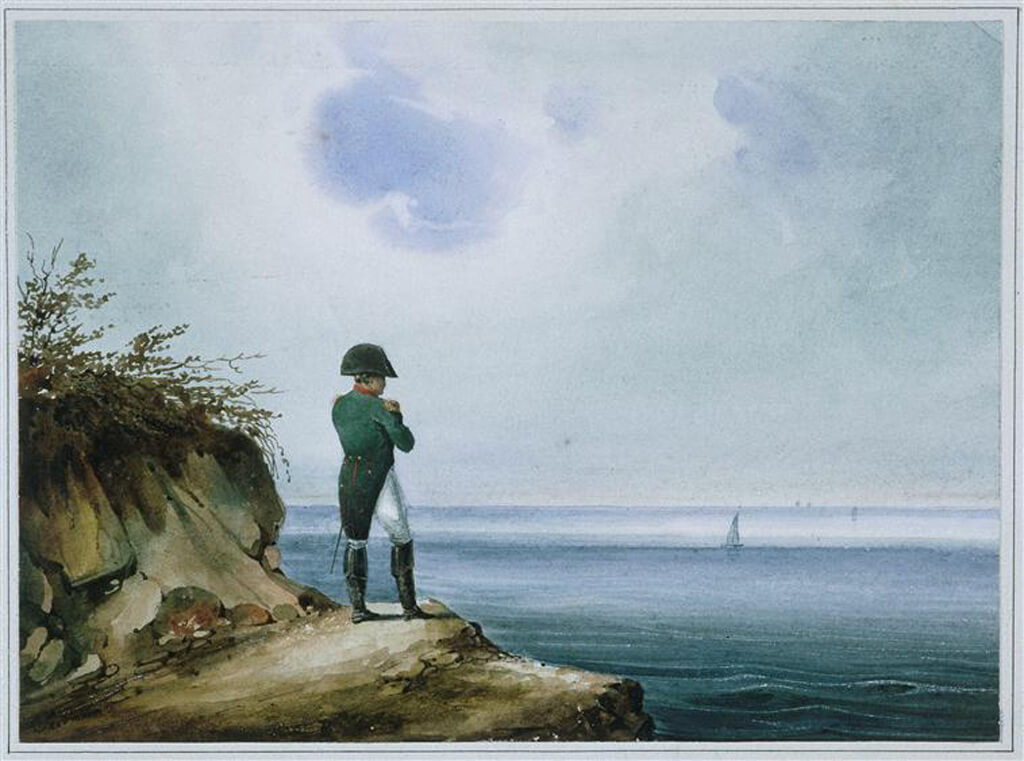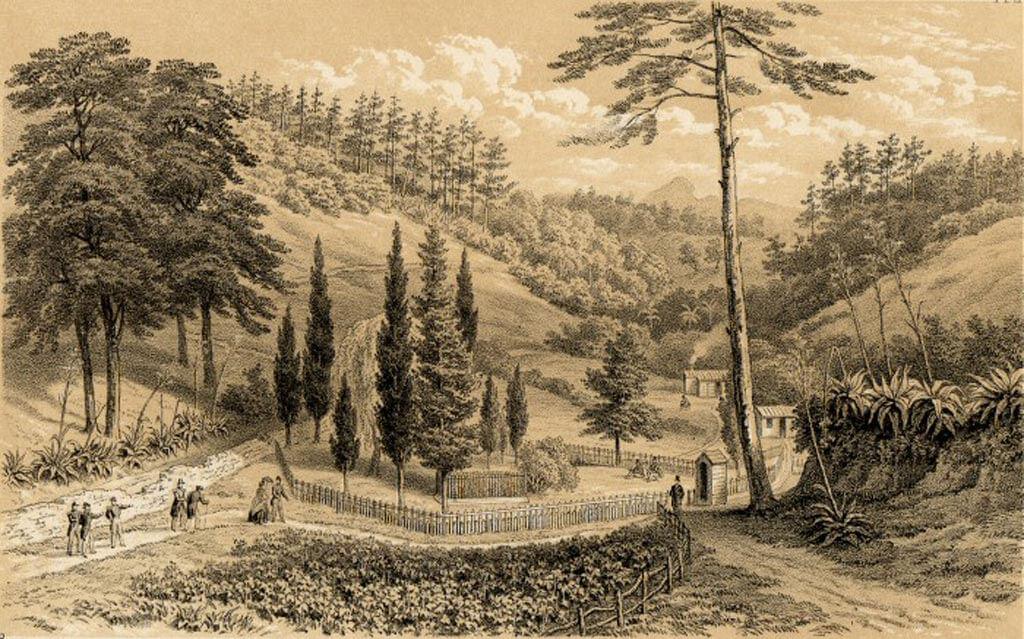Napoléon Bonaparte is a key character in the history of Paris, France, and Europe. Born on the island of Corsica in 1769, Napoleon Bonaparte was a French military leader and statesman who rose to prominence during the French Revolution. He became Emperor of the French, known by his regnal name Napoléon I, from 1804 to 1814 and briefly in 1815.
Napoléon is one of the most celebrated and at the same time controversial leaders in human history. According to a scientifically rigorous study published by the Cambridge University Press, Napoléon ranks second to Jesus Christ as the most influential person in history! After reading this article about Napoléon’s Tomb, check out the most famous quotes about Napoléon.
Died and buried on the island of Saint Helena, then repatriated to Paris, a third tomb of Napoléon Bonaparte is hidden in Paris, not far from the famous Napoléon Tomb at Les Invalides.
Are You Planning a Trip to Paris Last Minute?
If you are booking a last-minute trip to Paris, I’ve got you covered! Below are our guides, top tours, hotels, and more:
» Plan: Paris Travel Planner; Paris Arrondissements Guide; Check out the best Paris Metro tickets for tourists
» Book your flight tickets with Omio; book your train tickets with Omio
Book your transfer from the airport to the city with Welcome Pickups.
» Where to Stay: Best Districts to Stay in Paris
- Le Pavillon de la Reine (historical 5-star hotel in Le Marais)
- Hotel La Comtesse (mid-range hotel with Eiffel Tower view from all the rooms!)
- Hotel Ducs de Bourgogne (super central 4-star hotel near the Louvre)
» Top-Rated Paris Tours & Tickets:
- Louvre Museum Skip-the-Line Ticket
- Eiffel Tower Summit Access Ticket
- Seine River Night Cruise
- Château de Versailles and Gardens
- Catacombs Skip-the-line tour with VIP access to restricted areas
Want skip-the-line access at museums & attractions in Paris? Get your hands on a Paris Museum Pass!
» Don’t leave without travel insurance! SafetyWing Essential plan works well for long and short trips (from 5 days up). Can also cover electronics theft through their add-on.
The Three Tombs of Napoléon

Today, the last faithful of the “Emperor of the French” have the choice between three graves to pay their respects. Here’s where to go and what to expect:
1. Napoléon’s Tomb in Saint Helena

Napoléon’s original grave is located in the Valley of the Willows (now Sane Valley) in Saint Helena. Napoléon’s Tomb in Saint Helena is considered one of the seven wonders of the island.
Although Napoléon’s body no longer resides there, Napoléon’s grave remains a popular destination for visitors. The land in which the tomb stands, along with Longwood House, was sold in 1858 to the French Government for a sum of £7,100.
2. Napoléon’s Tomb in Paris

Napoléon’s remains were on the island of Saint Helena for almost twenty years. It took King Louis Philippe around seven years of negotiations with the British government to bring back the remains to Paris. It was his own son, the Prince de Joinville, who, at the helm of the ship La Belle-Poule, brought back the remains of the fallen emperor in 1840.
Even though Napoléon Bonaparte had originally planned a burial at the Saint-Denis Basilica, where most of the past French Kings were laid to rest, just before his death, he requested “to be buried on the banks of the River Seine so that he could be among the French people.”
However, the ruling power decided to bury him inside the Dome Church at Les Invalides, alongside other French generals. Today, Napoléon’s Tomb at Les Invalides is one of the most popular sites associated with Napoléon in Paris and attracts visitors from all over the world.
To accommodate the imperial tomb beneath the Dome, the architect Louis Visconti carried out extensive excavation work that lasted 20 years. The remains of Emperor Napoléon I, which had been installed at the Saint Joseph chapel during the construction works, were finally laid to rest in the final tomb on 2 April 1861. During the lengthy time of construction, the promoter, architect, and main sculptors of Napoléon’s Tomb had all passed away, so they were not present at the tomb’s unveiling.
Visiting Napoléon’s Tomb in Paris – Les Invalides

The final burial site of Napoléon is nothing short of spectacular. Louis Visconti created an open, two-level crypt below the Dome of Les Invalides, which is surrounded by murals, sculptures, gold, and other impressive artworks.
To get a close-up view of the crypt, you need to take a walk downstairs and pass through the crypt’s door, flanked by two funerary spirits. They carry symbols of his military, imperial, and civil power: an imperial crown, a hand of justice, an earth globe, and a sword.
The door to access the crypt was made from a cannon used in one of Napoléon’s most famous victories, Austerlitz. Above the door, you can find the inscription of Napoléon’s wish to be buried in Paris.
The surrounding circular gallery is supported by twelve pillars. On these pillars, you can see the Victories sculpted by James Pradier. On the gallery’s wall, ten relief panels celebrate the achievements of Napoleon during his lifetime. The inner chamber houses a partly gilded statue of Napoleon dressed in coronation attire.


The main feature of Napoléon’s tomb is the sarcophagus, situated directly in the center of the crypt, beneath the dome. It is crafted from red quartzite and contains five nested coffins made from various materials.
Before leaving the Tomb of Napoléon, look up and admire the fresco of the Dome, which depicts the Apotheosis of Saint Louis by Charles de la Fosse. King Louis IX, known as Saint-Louis, surrenders his sword and crown to Christ in the presence of the Virgin Mary.

You can also visit the other tombs inside the Dome Church, including those of Duroc, Bertrand, Foch, and the heart of Vauban. The tombs of Napoleon’s brothers, Jérôme Bonaparte and Joseph Bonaparte, were later added inside the Dome Church after their deaths.


The coffin of Napoleon II was also brought to the Dome Church, placed in the underground chamber, and covered by a marble slab.
3. Second Tomb of Napoléon in Paris

Few people know there’s a second tomb of Napoléon in Paris. If you visited Napoléon’s Tomb in Les Invalides, you probably passed by this second tomb without noticing it!
The original Napoléon tombstone in Saint Helena was brought back in 1840 at the same time as the remains of the Emperor, and it was placed in the Saint-Louis des Invalides Church until 1978.
At that time, it was relocated to the small garden adjacent to the church. You can view the Napoléon tombstone from the windows of the Corridor de Nîmes in Les Invalides.

Surprisingly, this tombstone bears no inscription. This is due to a disagreement between the French and the governor of the island of Saint Helena at the time of Napoléon’s death. The governor of the island refused to have “Napoléon I” inscribed on the tombstone. Instead, he proposed the inscription “General Bonaparte,” which was rejected by the French, resulting in the plaque remaining blank.
Napoléon’s Tombs in Paris – Practical Information

Address: Napoléon’s tomb is located in Paris, inside the Dome Church at Les Invalides. The closest access to the Dome Church is 129 rue de Grenelle.
The original tombstone brought from Saint Helena is located in the garden adjacent to Saint-Louis des Invalides Church, and you can view it from the Corridor de Nîmes.
Hours: Les Invalides is open daily from 10:00 a.m. to 6:00 p.m. (9:00 p.m. on Tuesdays). The museum is closed on January 1, May 1, and December 25.
Buy your tickets online here. Les Invalides is also included in the Paris Museum Pass, which is available for 2, 4, or 6 days. Check out my Paris Museum Pass review to see if it is a good option for you.
When you visit Napoleon’s Tombs at Les Invalides, be sure to check out Saint-Louis des Invalides Church and the different rooms at the Army Museum dedicated to the Napoleonic Era – it is included in your ticket price.

